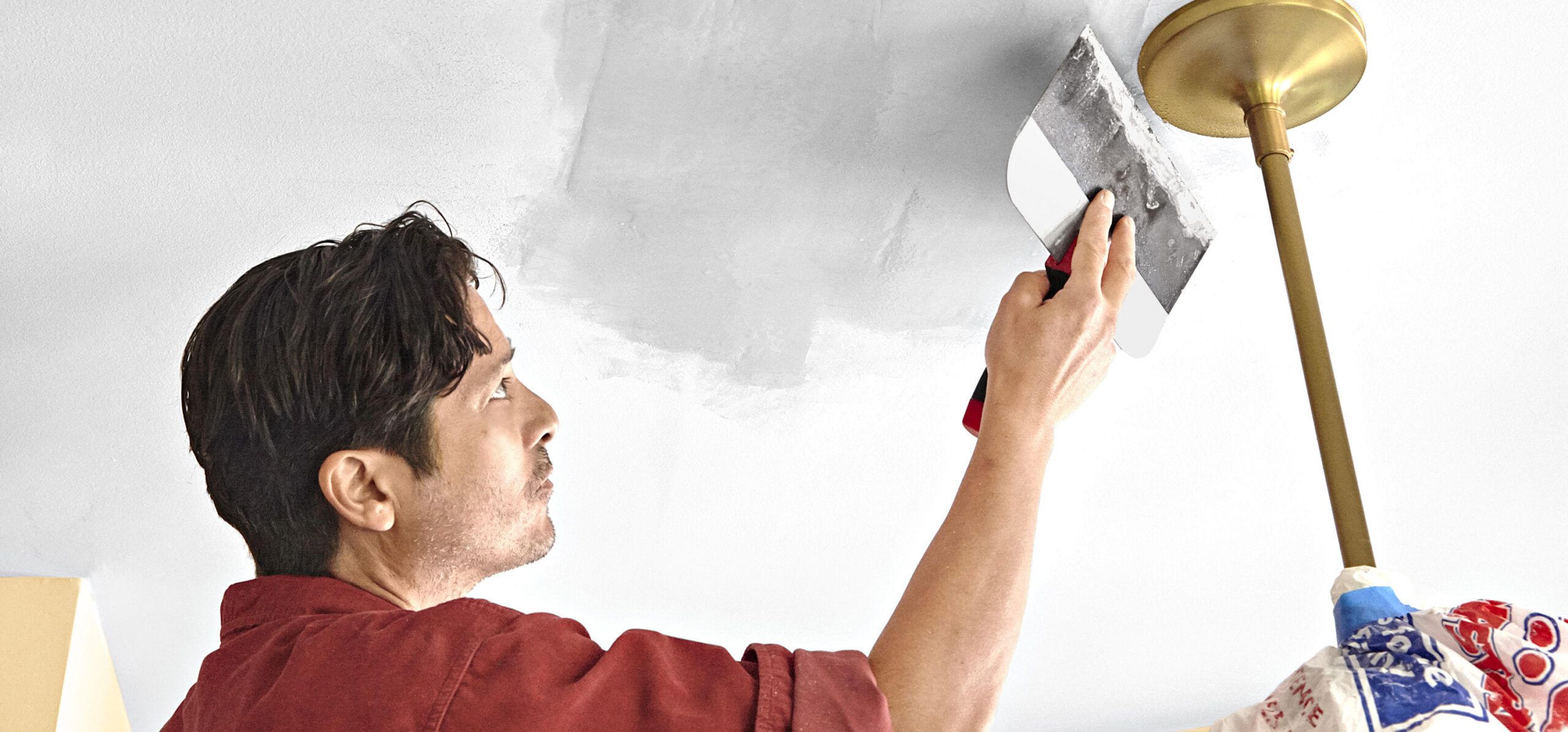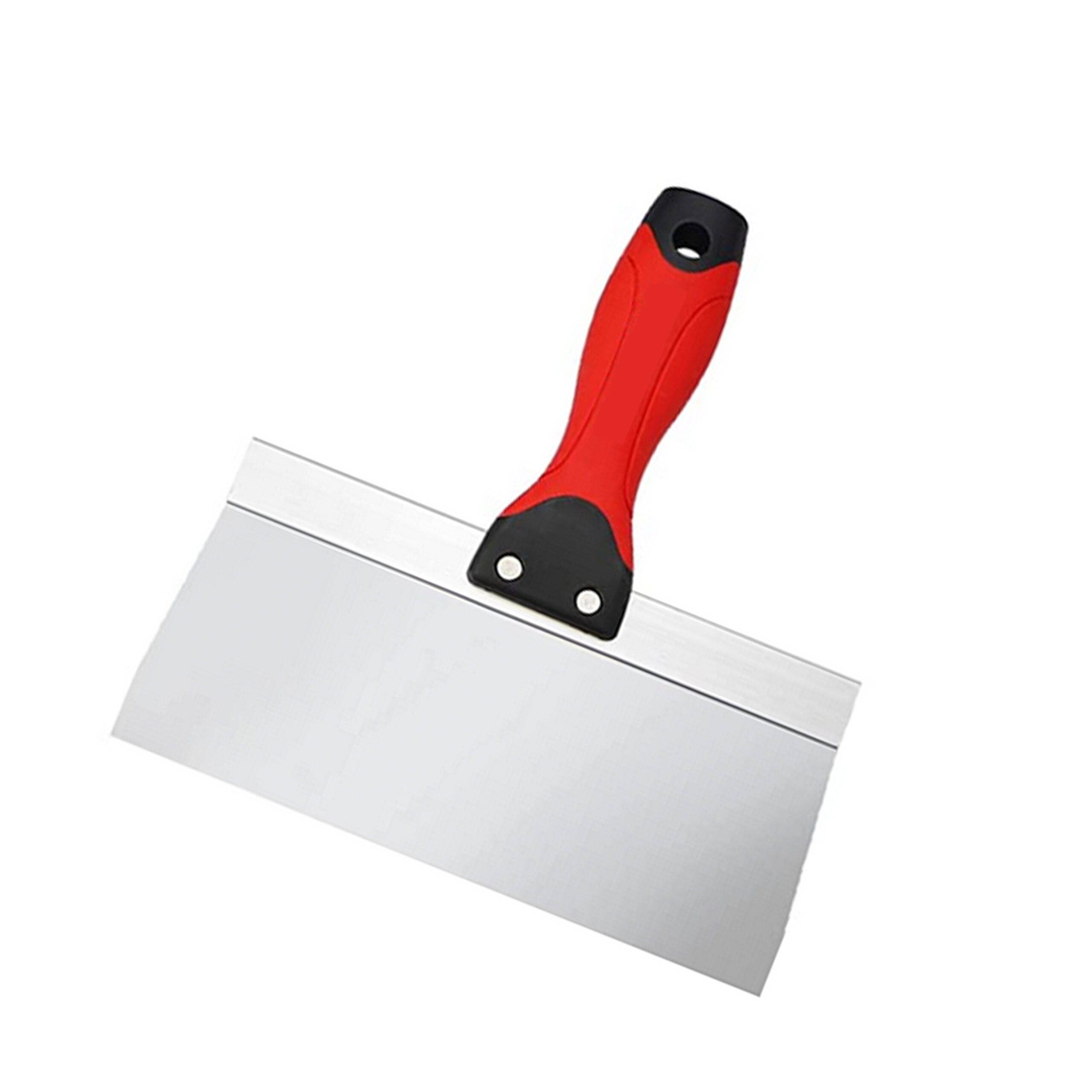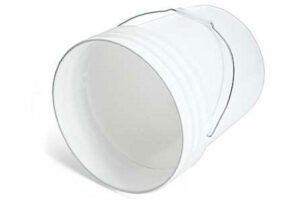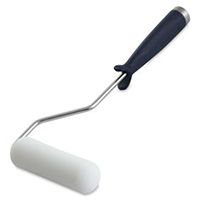We may be compensated if you purchase through links on our website. Our team is committed to delivering honest, objective, and independent reviews on home products and services.
Maybe you dinged your ceiling while doing some remodeling, or your kid threw a toy that left a small hole. Now, an area of your ceiling you never noticed before is all you can look at. Thankfully, you can patch a ceiling with a little know-how and the right tools. Whether you’re dealing with water damage, cracks, dings, or general wear and tear, this guide will walk you through the process to get your ceiling looking as good as new.
Identifying the Root Cause of Ceiling Issues
First, identify what caused the ceiling damage. It could be from a simple accident, or it could be a sign of larger trouble you can’t yet see. This guide is for minor ceiling issues, such as a small hole, crack, or resolved leak. If you have larger issues or can’t find the source of the damage, you should hire a professional to avoid costly problems later on.
Must-Have Tools for Patching a Ceiling
To patch a ceiling well, you’ll need the following items:
- Drywall knife (6-inch and 12-inch)
- Medium-grit sanding sponge
- Paint roller
- Safety glasses and dust mask
- Soft-bristle paintbrush
- Stepladder
- Utility knife
Ceiling Compound Types
Joint compound, also known as drywall mud, is the most common material used for ceiling patches. There are two main types:
- Premixed joint compound: Ready to use and ideal for smaller repairs
- Setting-type joint compound: Comes in powder form and requires mixing.
Setting-type compound is better for larger repairs, as it dries faster and shrinks less. We recommend this option for most ceiling repairs. It’s more durable and is less likely to crack over time.
Alternative Compound Types
While joint compound is the most common choice, there are other compounds suitable for specific scenarios:
- Caulk: Caulk is best for sealing gaps around ceiling fixtures or along the edges where the ceiling meets the walls. It remains flexible and can accommodate slight movements in the building structure.
- Lightweight spackle: It’s ideal for small holes and minor dings. It dries quickly and sands easily.
- Plaster: Plaster is useful for repairs on traditional plaster ceilings. It provides a harder finish than joint compound.
Preparing for Ceiling Repair
Before you begin, plan for these safety measures:
- Wear safety glasses to protect your eyes from falling debris.
- Use a dust mask to avoid inhaling particles.
- Ensure proper ventilation in the work area.
- Turn off electricity to any ceiling fixtures in the repair zone.
To protect your space and make cleanup easier, take these steps:
- Lay drop cloths on the floor beneath the work area.
- Remove or cover furniture and belongings.
- Set up adequate lighting to see the ceiling clearly.
- Position your stepladder securely on a flat surface.
Step-by-Step Process for Patching a Ceiling
We will provide a step-by-step process for the proper way to repair a ceiling.
Step 1: Assessing and Scoring the Damaged Area
Begin by examining the damaged area closely. Use a utility knife to score around the perimeter of the damage, creating a shallow cut. This helps prevent accidentally stripping the paper face off the undamaged drywall during repair.
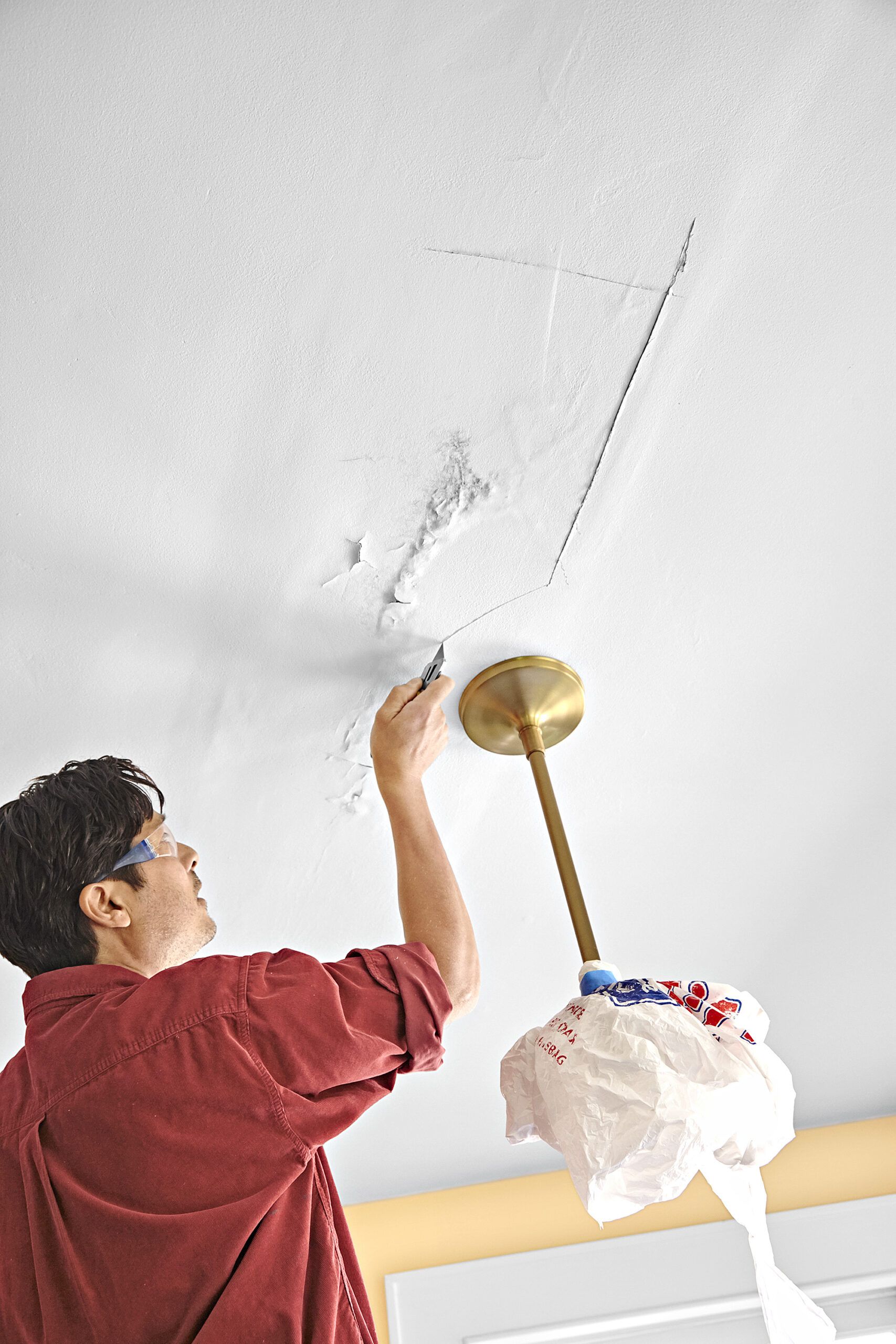
Using a 6-inch taping knife, carefully remove any loose paint, paper, or crumbly bits from the damaged area. Be cautious not to extend beyond the score line you created. Once the loose material is removed, use a soft-bristle paintbrush to dust the area clean.

Step 2: Applying Joint Tape for Cracks and Seams
If the damage occurred at a seam between drywall panels or if there are cracks in the plaster core, apply joint tape to prevent further cracking. Mix a small batch of setting-type joint compound to a peanut butter consistency. Mist the ceiling with water from a spray bottle to ensure proper compound setting, then apply a thin layer of compound to the ceiling with the taping knife. Press the tape into the wet compound, smoothing out any bubbles or wrinkles.
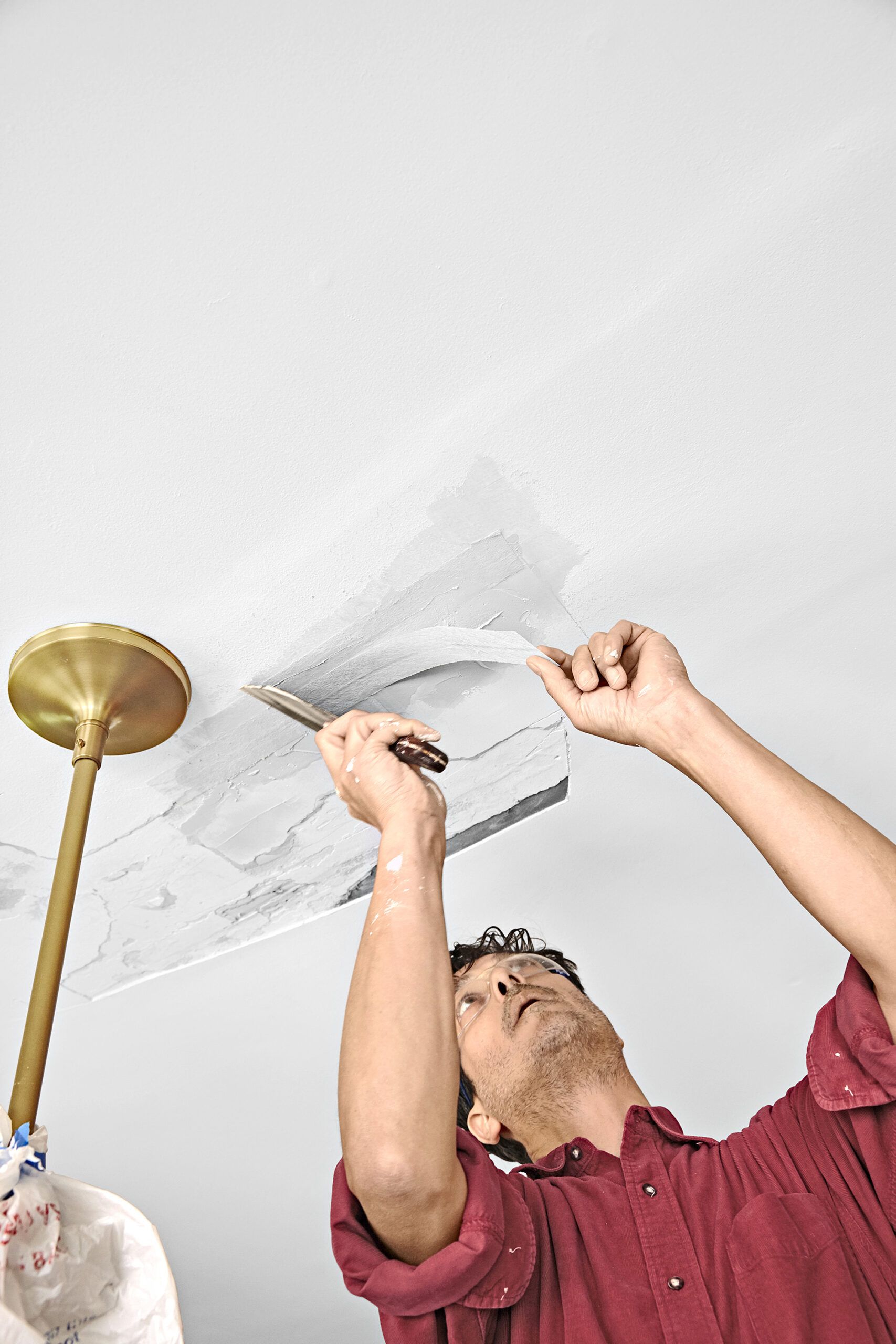
Step 3: Applying Filler for Larger Holes
For larger holes, you’ll need to do additional steps for a sturdy repair. First, you’ll need to create a backing for the filler compound to adhere to. Cut a piece of drywall slightly larger than the hole and attach it to the back of the damaged area using adhesive or screws. Apply joint tape around the edges to create a seamless transition. Next, fill the hole with setting-type joint compound, smoothing it out to blend with the surrounding ceiling.
Step 4: Mixing and Spreading Ceiling Compound
After the tape layer hardens, mix a larger batch of joint compound. Apply it to the ceiling using the 6-inch taping knife, then switch to a 12-inch knife to smooth the compound and feather its edges. Wait a few minutes for the compound to firm up, then mist and smooth it again. With some patience, you can eliminate most imperfections before the compound becomes too hard to work.
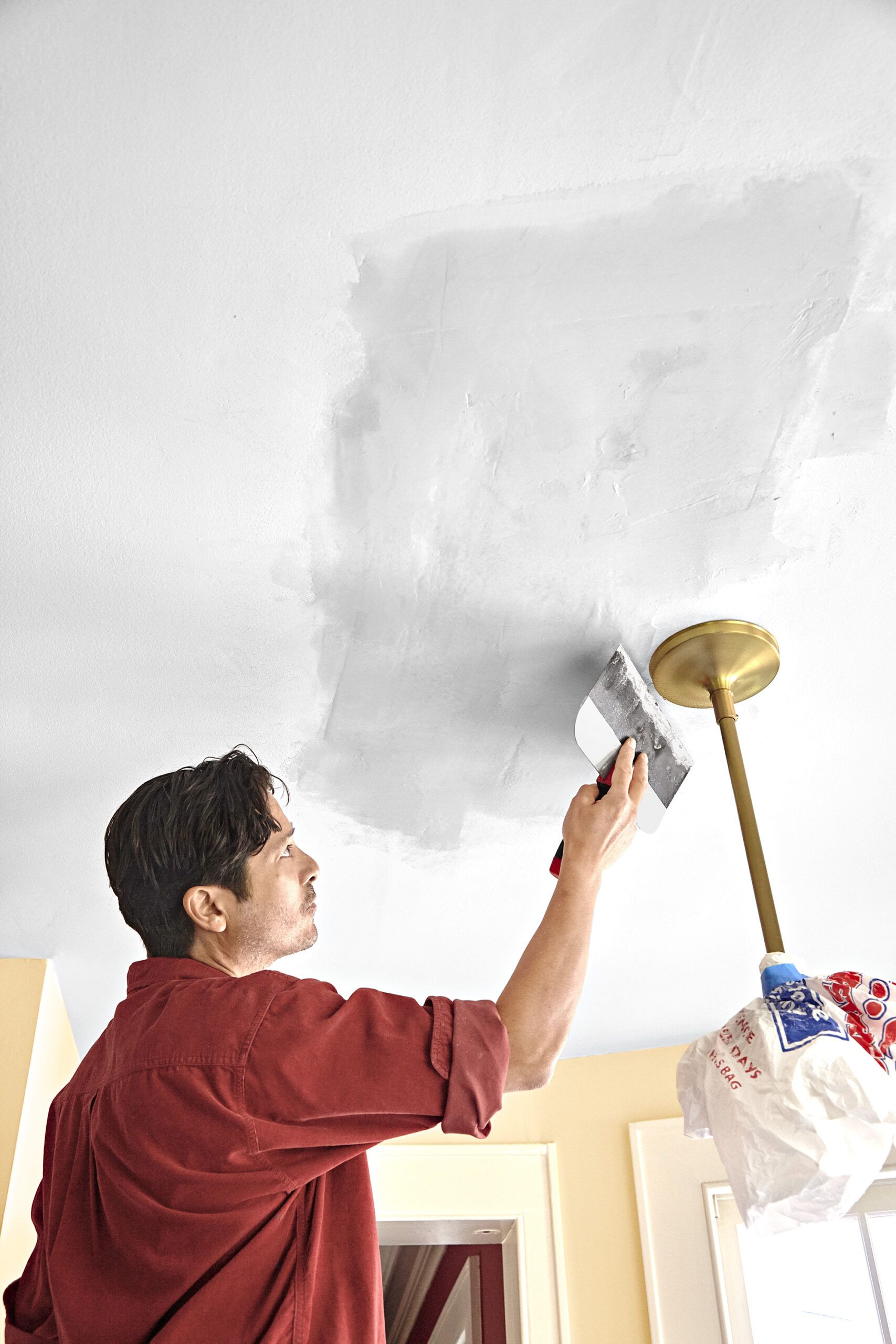
Step 5: Sanding and Smoothing
Once the compound is fully dry, use a medium-grit sanding sponge to smooth out any remaining blemishes. Pay special attention to the edges, ensuring they blend seamlessly with the surrounding ceiling. After sanding, wipe the area with a damp sponge to remove dust.
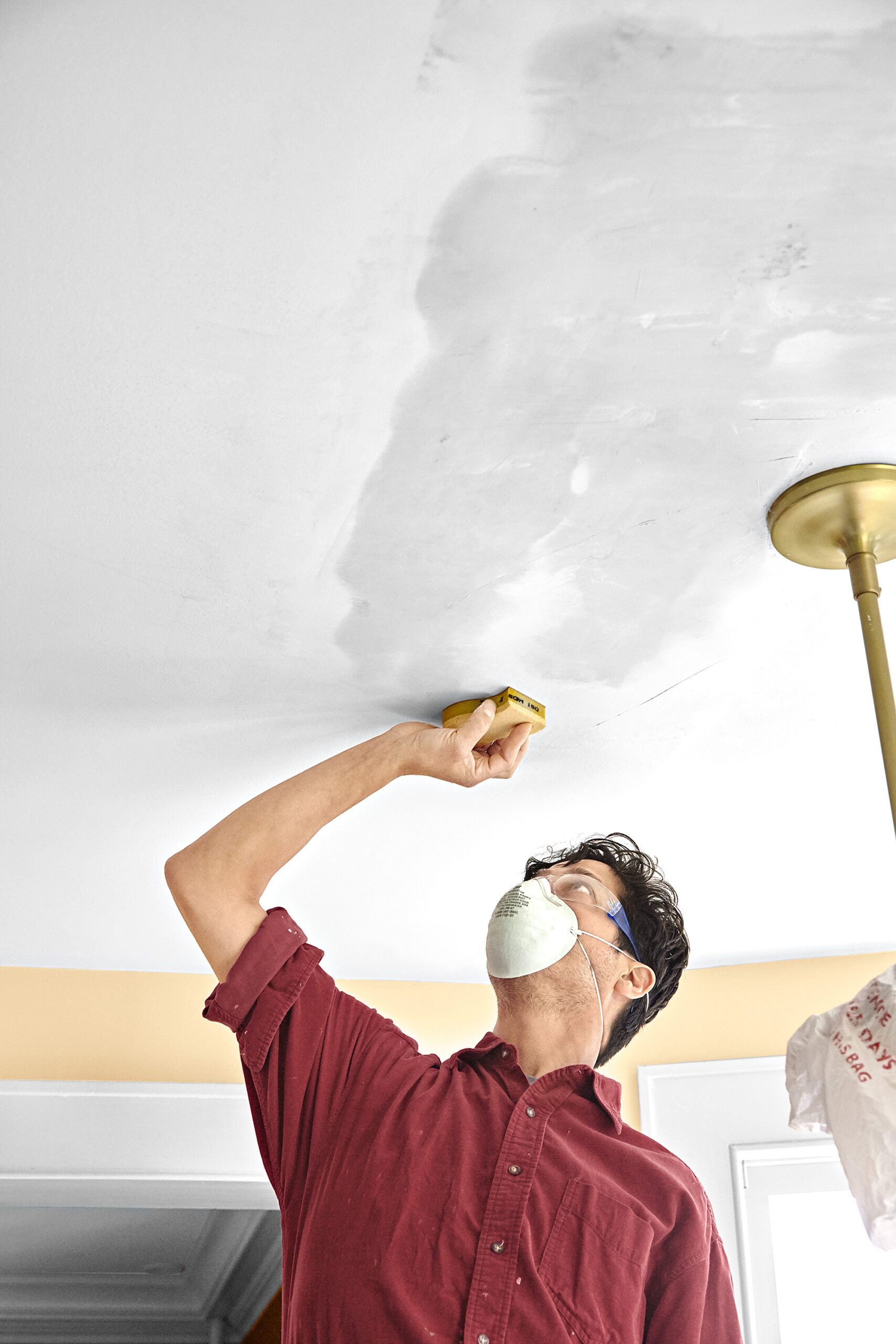
Finishing Touches: Priming and Painting Your Ceiling
The final steps involve priming and painting to help the patched area match the rest of the ceiling.
Selecting the Right Primer
Choose a water-based primer that’s compatible with your ceiling paint. Apply the primer with a brush or roller, taking your time for complete coverage of the repaired area. This step helps the new paint adhere properly and prevents the patched area from showing through.
Matching Your Ceiling Paint
For the best results, use the same type and color of paint that’s on the rest of your ceiling. If you’re unsure about the exact color, you may need to repaint the entire ceiling for a uniform look. Apply the paint with a roller, feathering the edges to blend with the surrounding area.
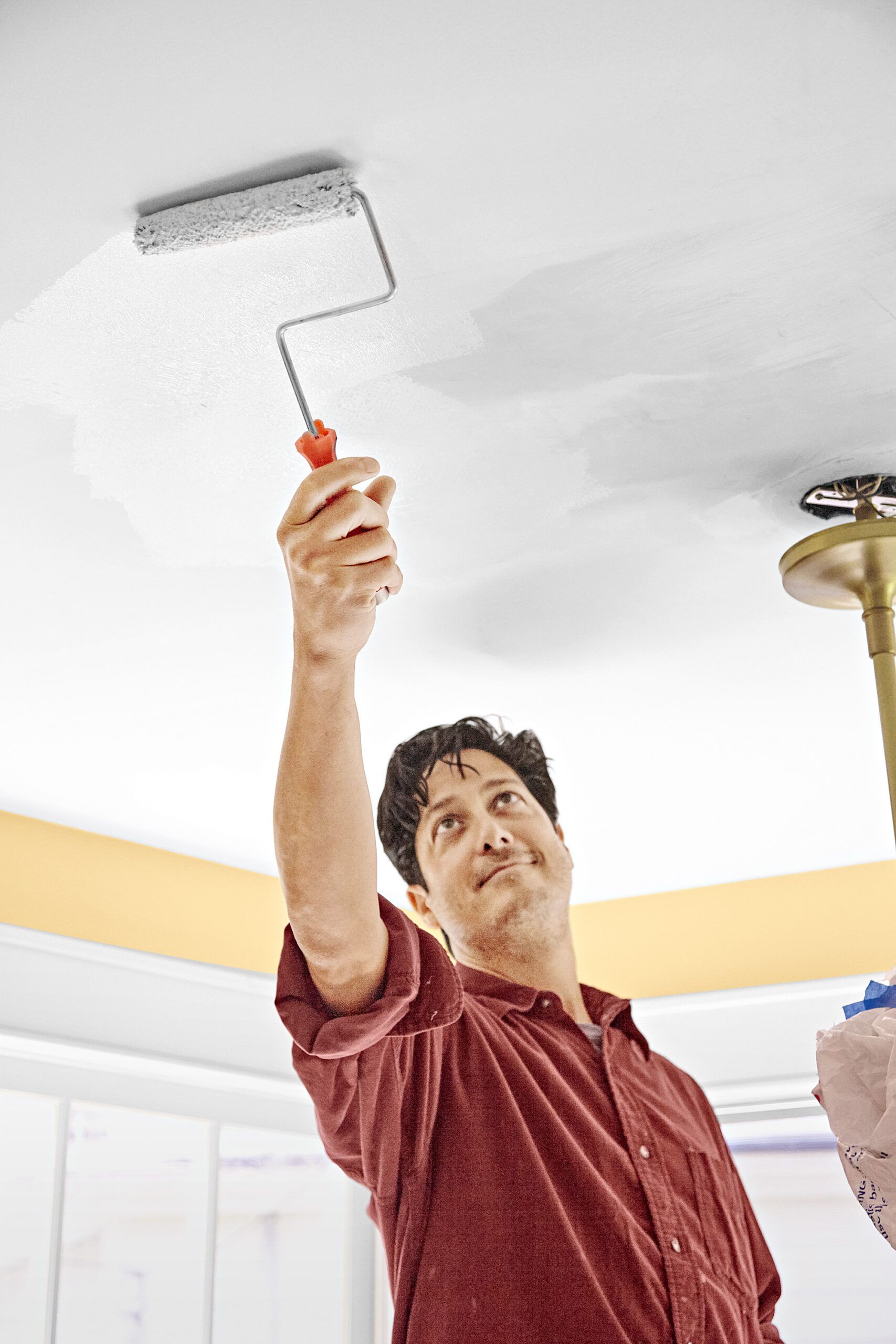
Advanced Techniques for Larger Ceiling Repairs
While the basic process remains the same, larger repairs often require additional steps or techniques.
Dealing With Water-Damaged Ceilings
For water-damaged ceilings, check that the area is completely dry before beginning repairs. You may need to remove and replace sections of drywall if the damage is extensive. Use a moisture meter to confirm the area is dry enough for repair.
Repairing Textured Ceilings
Textured ceilings require an extra step to match the surrounding texture. After the repair is complete and before painting, apply a texturing product that matches your ceiling’s pattern. Practice on a piece of cardboard first to get the technique right.
Using Mesh Drywall Patch Kits
For medium-sized holes and cracks, mesh drywall patch kits can be an excellent solution. These kits include a self-adhesive mesh that bridges the damaged area and provides a strong base for the joint compound. Start by placing the mesh over the hole or crack and pressing it firmly into place. Apply several thin layers of joint compound over the mesh, allowing each layer to dry before adding the next. Sand the final layer smooth and prepare it for priming and painting.
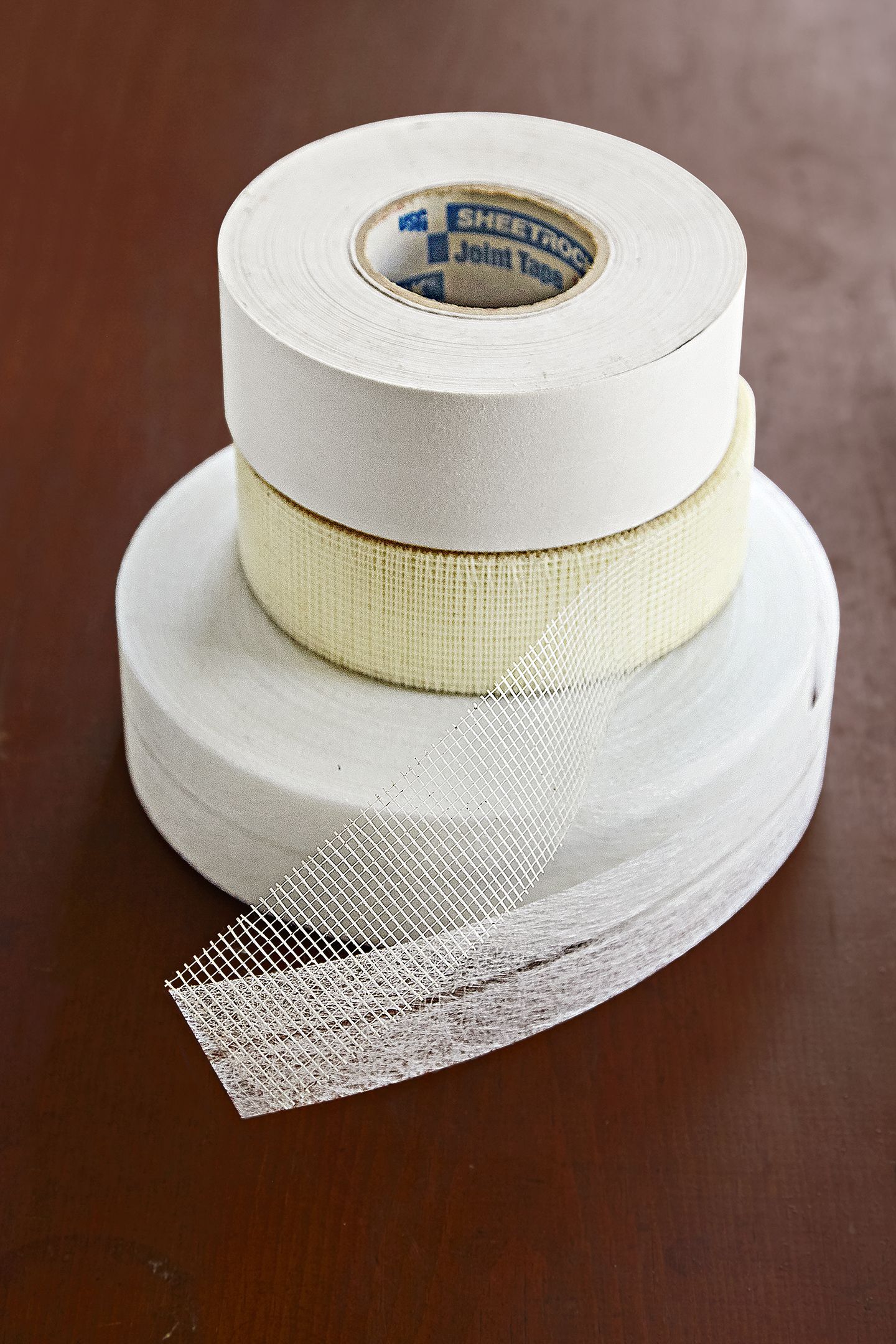
Alternative Finishes for Textured Repairs
In some cases, matching the ceiling’s texture perfectly can be challenging. Consider using alternative finishes to blend the patched area with the surrounding texture. Techniques such as stippling, rolling on a thick paint, or using a popcorn texture spray can help achieve a consistent look. Again, practice on a spare piece of drywall or cardboard to refine your technique before applying it to the ceiling.
Maintenance Tips To Prevent Ceiling Damage
Visually inspect your ceilings regularly, looking for signs of water stains, cracks, or sagging. Early detection can prevent minor issues from becoming major problems. Many ceiling problems stem from moisture. Ensure your home has proper ventilation, especially in bathrooms and kitchens. Fix any leaks promptly, whether they’re from the roof or plumbing.
Proper insulation and ventilation are fundamental for maintaining a healthy ceiling. Adequate insulation will prevent heat from escaping through the ceiling, reducing the risk of condensation and mold growth. Ensure attic spaces are well-ventilated to allow moisture to escape and prevent humidity buildup, which can lead to ceiling damage over time.
Routine Roof Maintenance
Since roof leaks are a common cause of ceiling damage, don’t slack on roof maintenance. Regularly inspect your roof for damaged shingles, flashing issues, and other potential problems. Ensure gutters and downspouts are clear of debris to prevent water from backing up and leaking into your home. Consider hiring a professional for annual roof inspections to catch issues early and avoid costly repairs.
Prompt Repairs for Small Issues
Don’t wait for small issues to turn into large problems. Promptly address any minor cracks, water stains, or peeling paint you notice. Small, timely repairs can prevent more significant damage down the road, saving you time and money in the long run.
